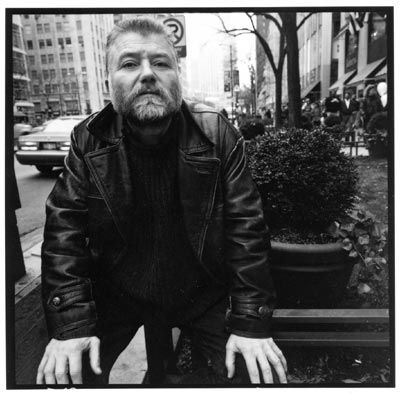
12.5.05

A composição do Tentet de Peter Brötzmann, na edição de 2004/2005, sofreu algumas alterações. Sairam Hamid Drake (bateria, percussão) e Mars Williams (saxofones. Para o lugar de Hamid entrou o norueguês Paal Nilssen-Love. E aí vão os mesmos nove elementos fixos, com a 10ª posição, como é hábito, aberta a convidados especiais. Este mês de Maio de 2005, o lugar tem estado a ser ocupado pelo trompetista sueco Magnus Broo, com o qual o Brötzmann Tentet está a realizar a sua habitual e regular digressão americana, o que paulatinamente acontece desde a fundação, em 1997. Imaginem-se as dificuldades porque passa Brötz e os camaradas para manterem em funcionamento uma irrequieta big band de free jazz, sem quaisquer concessões. É tamanha a obra, sem paralelo no mundo do jazz e da música contemporânea em geral. Manda braza, este pessoal:
Peter Brötzmann (sax tenor, tarogato, clarinete); Ken Vandermark (sax tenor, clarinete baixo); Mats Gustaffson (sax tenor e barítono); Magnus Broo (trompete); Joe McPhee (trompet/trombone de válvulas); Per-Ake Holmlander (tuba); Fred Longberg-Holm (violoncelo); Kent Kessler (contrabaixo); Michael Zerang (bateria); e Paal Nilsen-Love (bateria).
Sobre Herr Brötzmann, escreveu Chris Kelsey, outro grande saxofonista (soprano):
Three decades after his death, the legacy of Albert Ayler is plain — a plethora of reed-biting aural contortionists bent on exploiting the saxophone's propensity for making sounds that resemble a human scream. Many such players, unable to play anything resembling a coherent melody, rely instead on the extreme manifestations of the Ayler technique; their playing is more often than not a randomly executed wall of energy and emotion-driven white noise. Peter Brotzmann, on the other hand, is the rare Ayler-influenced saxophonist capable (like Ayler) of producing improvised lines of depth and sensitivity while informing them with enough raw power to make a lesser saxophonist wilt. Brotzmann's playing has little of the arbitrariness one associates with other similar tenor saxophonists like Charles Gayle or Ivo Perelman; Brotzmann possesses a surety of tone and a melodic center characteristic of a focused musical conception. While there's no lack of spontaneity in his music, Brotzmann's concern with motivic and melodic reiteration gives his playing a palpable sense of direction. Indeed, Brotzmann's obsession often serves as a pivot upon which an ensemble turns, making him a consummate team player, in addition to being an affecting soloist (...).
Brotzmann was first a visual artist, attending the Art Academy of Wuppertal. A self-taught saxophonist, he began playing with Dixieland bands beginning in 1959. In the early '60s he became involved with the avant-garde Fluxus movement. He began plying free jazz around 1964; in 1965 he played in a group with the virtuoso bassist Peter Kowald and the Swedish drummer Sven-Ake Johansson. The next year he played with Mike Mantler and Carla Bley's band and became associated with Alexander Schlippenbach's Globe Unity Orchestra. In 1969 Brotzmann helped form FMP, a long-lived free jazz label and presenter that issues recordings and sponsors live performances. In the '70s, Brotzmann would play and record with pianist Fred van Hove, drummer Han Bennink, trumpeter Don Cherry, and trombonist Albert Mangelsdorff, among others. His circle of associates would continue to widen; in 1986 he would play (with drummer Ronald Shannon Jackson, guitarist Sonny Sharrock, and electric bassist/producer Bill Laswell) in Last Exit, a metal/free jazz group that enjoyed brief success. By the late '90s one would be hard-pressed to name a prominent free jazz musician with whom Brotzmann had not played. The strength of his personality is matched by his adaptability; as evidence, hear Eight by Three, his 1997 recording with the pianist Borah Bergman and multi-reedist Anthony Braxton. While one might expect Brotzmann's incendiary nature to overwhelm the more blithe Braxton, he instead manages to parry and complement effectively. With Bergman's percussive intensity, the record becomes one of the more unusual and compelling free jazz artifacts of the era.

